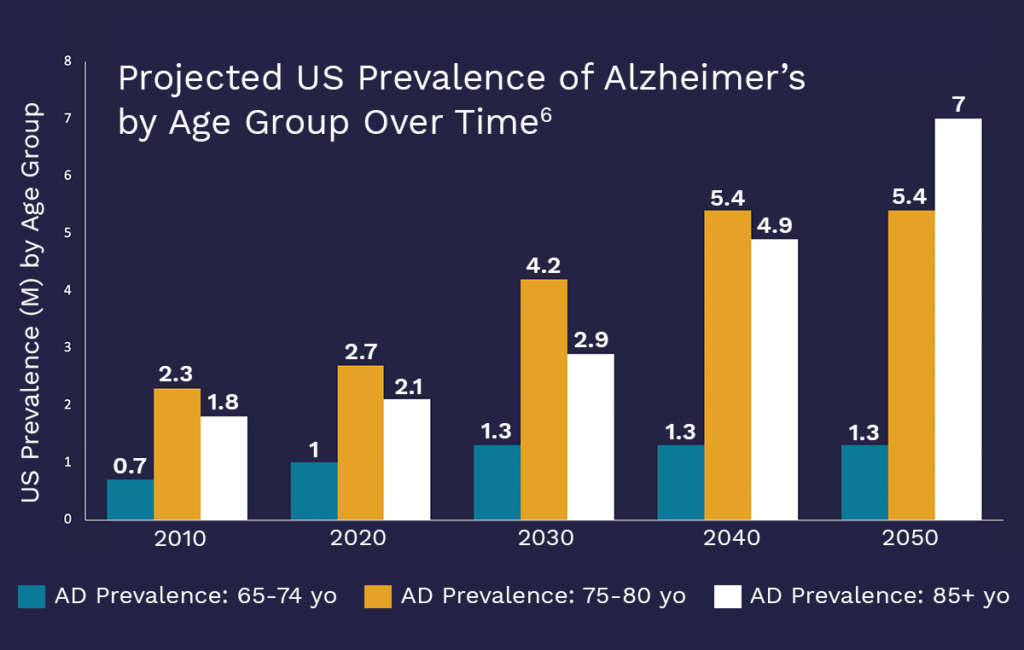Between 2010 and 2050, the number of people over 65 globally will triple to more than 1.5B1, growing from 8% to over 15% of the population, going above 20% in many developed nations. This will be an unprecedented challenge for the next generations, with profound social, economic and health impact. In the US over-65 population, 56% of people have 2 or more chronic conditions and this continues to increase with age2, creating an enormous burden on patients, caregivers, and health systems.
From a health perspective, aging is a multifactorial process resulting in the progressive deterioration of biological functional drivers that typically keep organs and tissues healthy. Age is the major risk factor for most of the leading causes of death in the world, including heart disease, cancer, stroke, and dementia. In fact, old age is accompanied by a precipitous decline in brain function, and roughly one-third of individuals 85 years or older suffer from Alzheimer’s disease or related dementias.3 And yet today, only 16% of seniors receive regular preventive health screening for problems with memory or thinking.4


Current treatments for some of the most serious diseases of aging have been largely unsuccessful in disease modification and typically only provide symptomatic relief. In Alzheimer’s and Parkinson’s disease, most pharmaceutical solutions have centered on one of a few targets, such as the beta amyloid pathway in Alzheimer’s. And despite billions of dollars in research and development, there has been a 99.6% failure rate in Alzheimer’s clinical trials in the past decade.5 There is an urgent need for effective solutions to treat the complex pathology of these diseases in the large and growing elderly patient population. We believe that the most effective solutions will address several pathological processes, not only one.
- United Nations, Department of Economic and Social Affairs, Population Division. (2017). “World Population Prospects: The 2017 Revision.”
- CDC/National Center for Health Statistics. (2008). “National Health Interview Survey.”
- Hebert LE, Weuve J, Scherr PA, Evans DA. (2013). “Alzheimer disease in the United States (2010-2050) estimated using the 2010 Census.” Neurology; 80(19):1778-83.
- Alzheimer’s Association. (2019). “Alzheimer’s Association Consumer and Primary Care Physician Cognitive Assessment Surveys.” Alzheimer’s Disease Facts & Figures.
- Cummings, J, Morstorf T, Zhong K. (2014). “Alzheimer’s disease drug-development pipeline: few candidates, frequent failures.” Alzheimer’s Research & Therapy; 6:37.
- Adapted from Herbert, et al. Alzheimer Disease in the United States (2010-2050) estimated using the 2010 Census, Neurology, 2013 May 7; 80 (19): 1778-1783